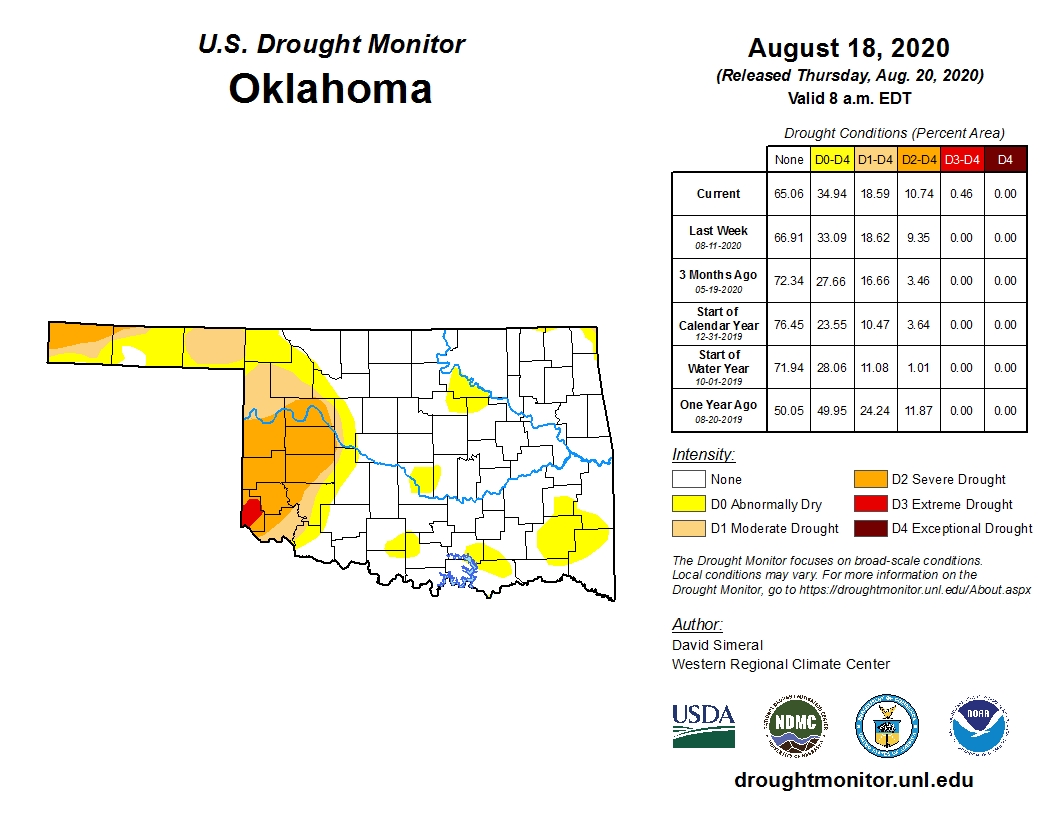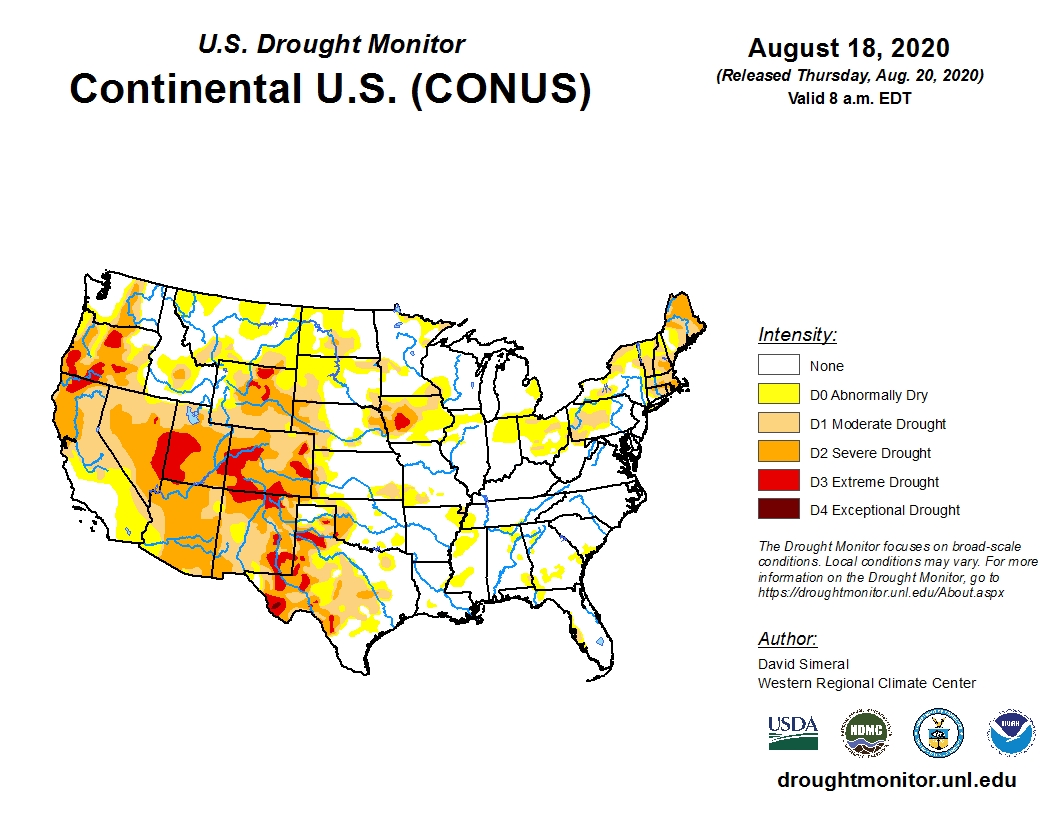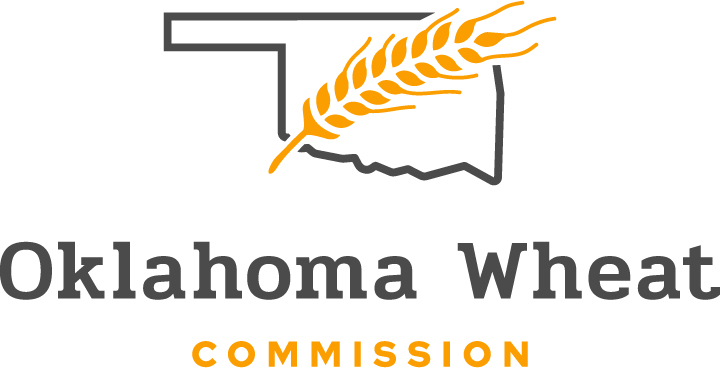
Agricultural News
Latest U.S. Drought Monitor Shows Worsening Conditions In The West, Southwest And Western Iowa
Thu, 20 Aug 2020 11:18:37 CDT
 Reviewing the latest U.S. Drought Monitor Update map shows some improvement for Oklahoma but degrading conditions for the western U.S. as well as western Iowa.
Reviewing the latest U.S. Drought Monitor Update map shows some improvement for Oklahoma but degrading conditions for the western U.S. as well as western Iowa.
There is little good news from the west and southwest U.S. as we saw intensification of drought caused by continued hot, dry conditions topped by an historic heat wave gripping the region.
There has been virtually no help from a weak monsoonal season as Arizona and New Mexico have experienced less than 50 percent of normal precipitation since the season started.
Drought conditions in west Texas have also deteriorated and a persistent short-term deficit is showing up in Iowa.
Texas saw the introduction of Exceptional Drought (D4) in the Trans Pecos region in the far southwest. This is impacting everything from rangeland to crops.
Specifically, for Oklahoma, areas of drought intensified in the extreme southwestern area where farmers and ranchers are reporting dry stock tanks and deteriorating pasture and range conditions.
According to the Oklahoma Mesonet, from January 1 to August 18, southwestern Oklahoma has experienced more than 30 days of temperatures exceeding 100 degrees F. Harmon County has now been engulfed by Extreme Drought (D3).
For the rest of Oklahoma there is somewhat better news as approximately 65 percent of the state is not experiencing any drought-like conditions. However, this is about a 2-point degradation from last week, yet still better than one year ago at this time when only 50 percent of the state was drought free.
Click here to view the current Oklahoma drought map update.
Looking ahead, there does not appear to be much relief for Oklahoma or any of the severely impacted areas of the country as a hot, dry week is forecast.
Click here for the NOAA 6-10-day precipitation outlook.
Click here to view the U.S. drought map update.
The U.S. Drought Monitor Map is developed through a partnership between the National Drought Mitigation Center at the University of Nebraska-Lincoln, the United States Department of Agriculture, and the National Oceanic and Atmospheric Administration.

WebReadyTM Powered by WireReady® NSI
Top Agricultural News
More Headlines...





